
In the past few years of the Internet data explosion, various types of data processing and data visualization requirements have led to the birth of a large number of high-quality BI tools on GitHub.
With the help of these BI tools, we can greatly improve the efficiency of data analysis, generate higher-quality project reports, allow users to see the results through intuitive data, and reduce communication costs.
However, many students still gave me feedback, saying that foreign open source BI tools have a high threshold for use, and the operation interface does not conform to the usage habits of Chinese people. It takes a long time to learn to figure it out, so let me see if there are open source BI tools with low threshold available.
Coincidentally, I accidentally discovered a domestic open source BI tool called DataEase on GitHub two days ago .
Both the user experience and the interface style are more in line with our operating habits.
Since the project was released in June last year, the GitHub Star data has continued to rise steadily. In less than a year, it has accumulated 9,500 Stars. In the subdivision of data analysis, its growth rate can be described as amazing.
Its GitHub profile is "An Open Source Data Visualization and Analysis Tool for Everyone ".
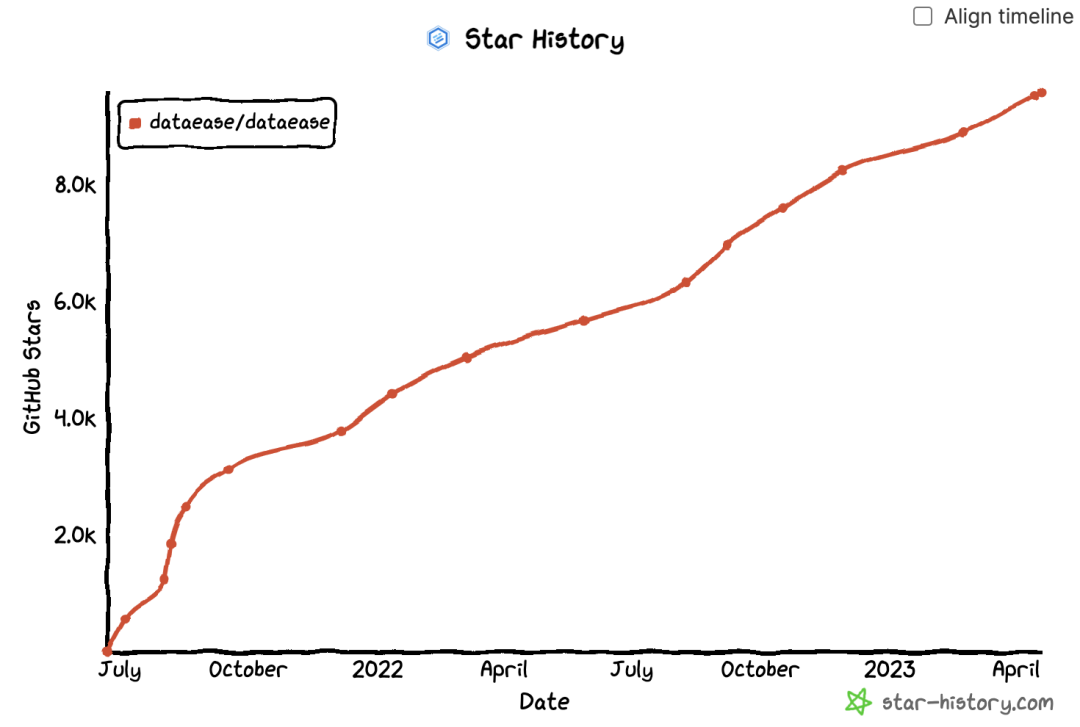
I tried it out and found that this slogan is not just shouting casually, and the experience is not the same as the BI tools I have used before. So today I would like to introduce this project to you.
The DataEase open source tool is developed by FIT2CLOUD company.
This company may be familiar to everyone. As a technology company that has made considerable achievements in the field of data analysis, Feizhiyun has participated in the release of many high-quality open source projects on GitHub.
For example, the well-known JumpServer open-source bastion machine project in China, the MeterSphere open-source continuous testing platform, and Halo, the open-source website building tool favorite of Q2D, are all led by this company. Its open source products cover many fields such as operation and maintenance security audit, BI analysis, software testing, and website building.
Their official website is also very cool. You can access the Feizhiyun open source large screen made by DataEase in real time, which shows the development of related open source projects in the past 30 days.
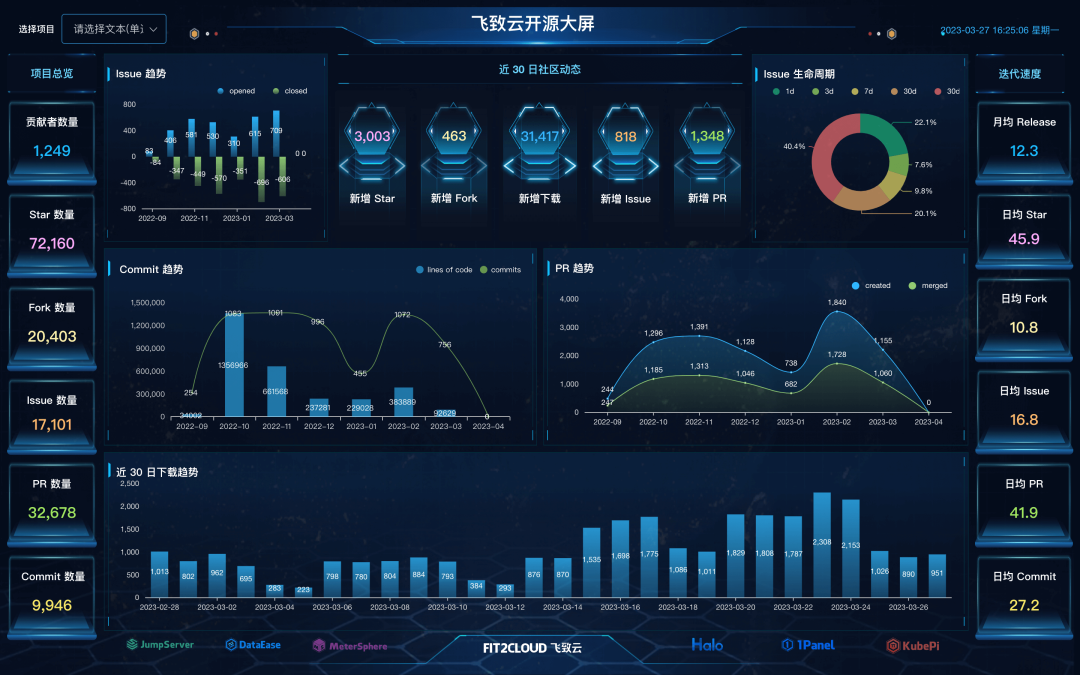
Not much to say, let me show you why DataEase dares to say that it is "available to everyone".
Smooth operation, easy to use
When giving feedback on the experience of using BI tools, many friends mentioned that foreign open source BI tools, such as Superset and Metabase, do not conform to the usage habits of Chinese people in operation.
In fact, the steps of making dashboards with BI tools are similar, basically divided into: creating data sources, creating datasets, displaying data through datasets, and forming dashboards .
Compared with other foreign open source BI software, DataEase organizes the overall process of dashboard design into: data source→dataset→dashboard, making the logic clearer, and greatly simplifies the details of the steps of creating a dashboard. Mainly reflected in the following aspects:
1. Data source: DataEase currently supports 19 kinds of databases. The data source configuration interface will display all supported databases in a tiled manner. Users can choose the corresponding database to configure and use directly, which is more intuitive and convenient; all data sources officially supported by DataEase can be directly use, no need to add drivers.
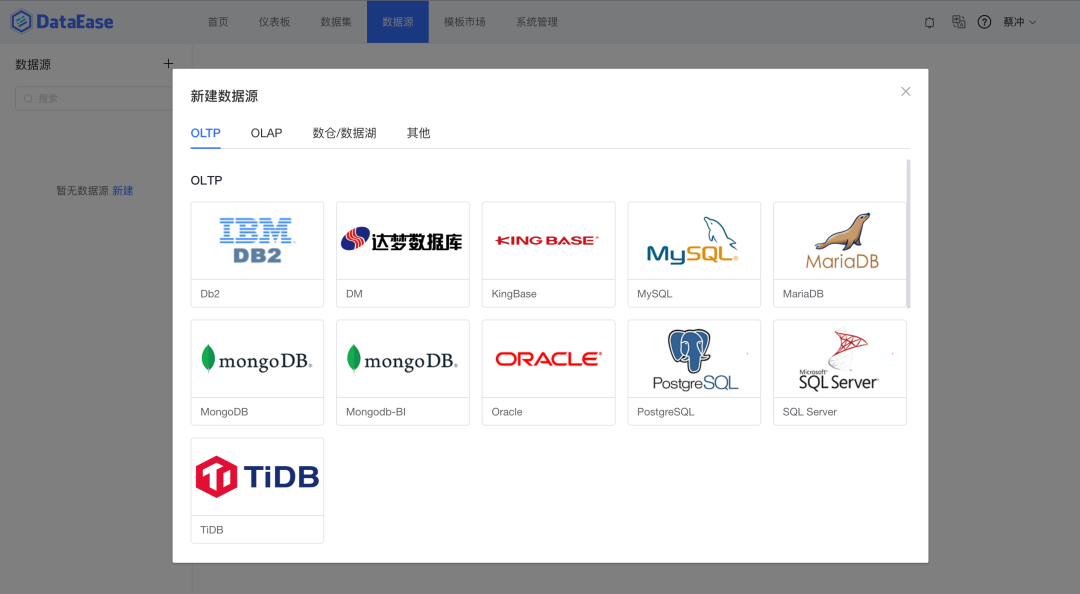
2. Datasets: DataEase supports the creation of database datasets, SQL datasets, table files, associated datasets, API datasets and various types of datasets. The operation interface is clear and clear, and the datasets also support the function of synchronizing data at regular intervals. In addition, DataEase also supports direct connection mode and local mode (based on Apache Doris/Kettle implementation).
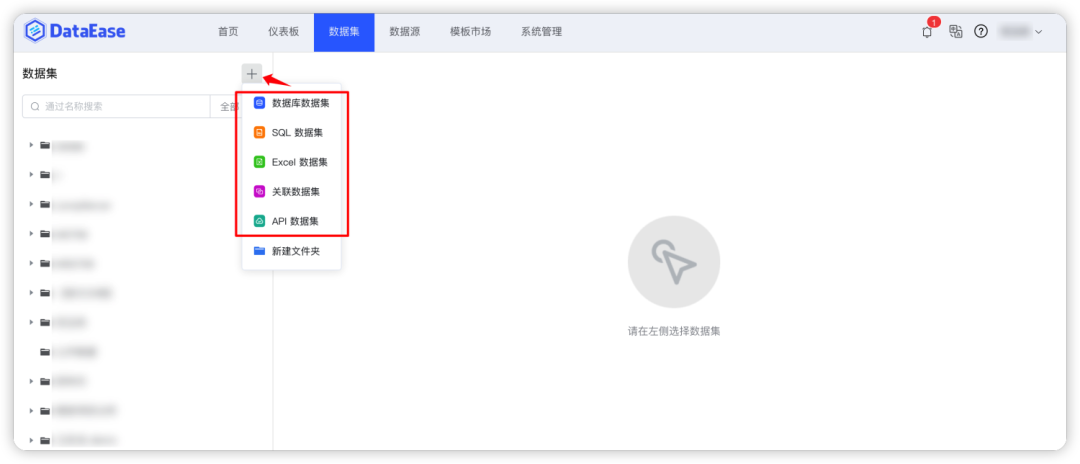
3. DataEase supports the function of associating data sets, and users can configure related functions on the function interface, which replaces the writing of SQL statements and reduces the learning and use thresholds.
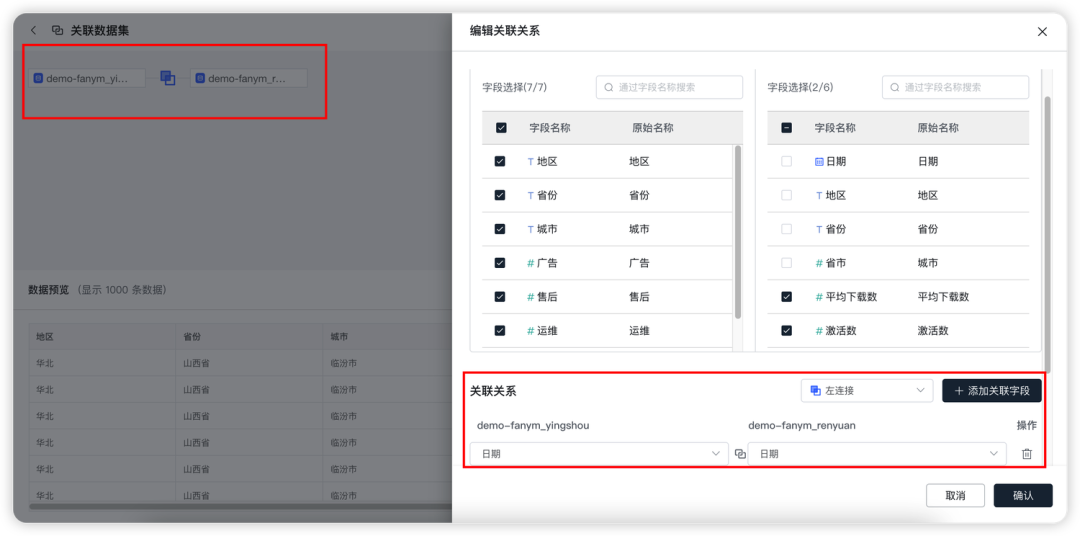
4. View: DataEase uses drag-and-drop operations to create views and layout dashboards, which is easy to use and reduces the learning cost for users; when creating views, DataEase sets some commonly used options as default values, reducing the time spent on operations. In terms of view appearance, DataEase can configure view borders, view background images, transparency, etc.; views support scrolling, drilling down, and multi-level linkage.
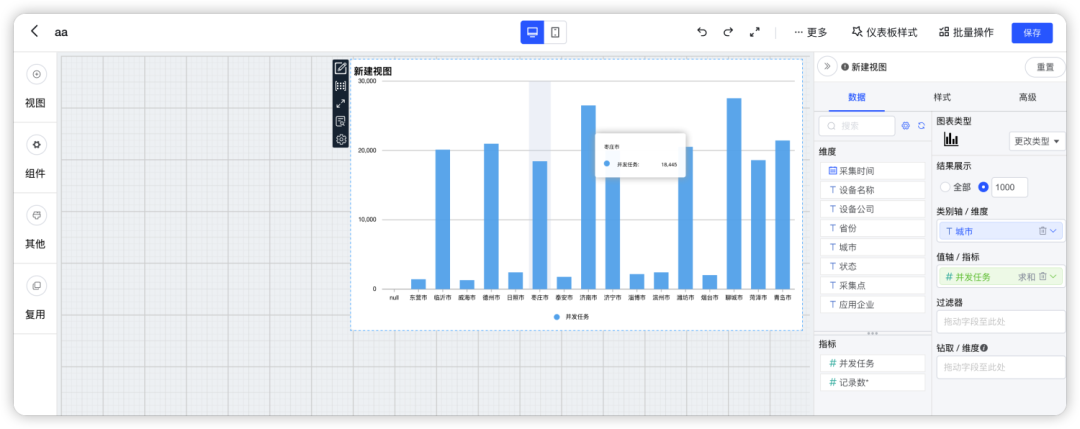
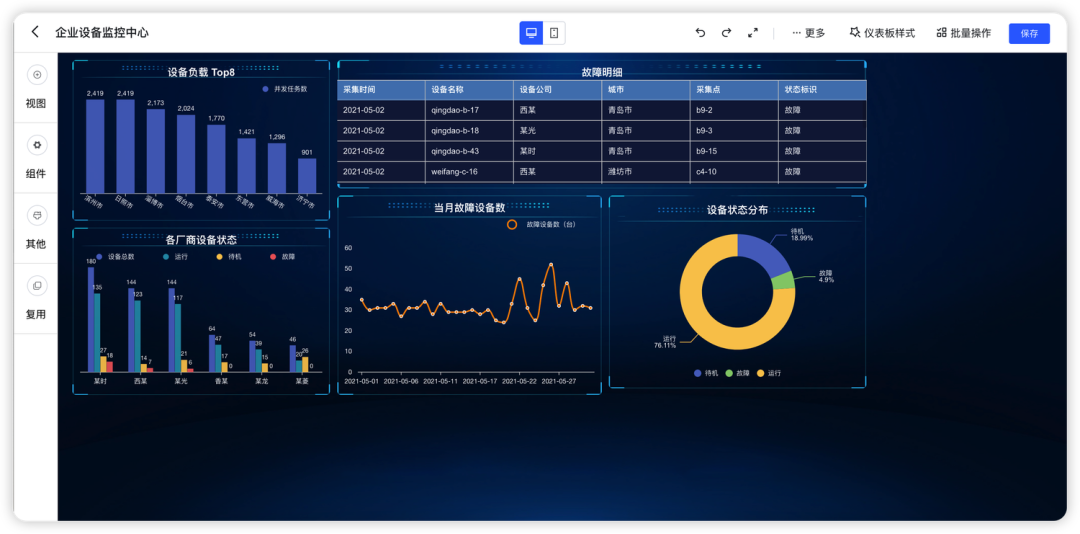
5. Dashboard design: DataEase combines the process of view making and dashboard making, so there is no need to make a view first and then adjust the layout of the dashboard; DataEase provides a finer-grained auxiliary grid, and you can drag and drop the position of the view at will. In terms of style support for the dashboard, DataEase supports configuring the background image of the dashboard, dark and light color themes, and uniform settings for the views in the dashboard, etc.
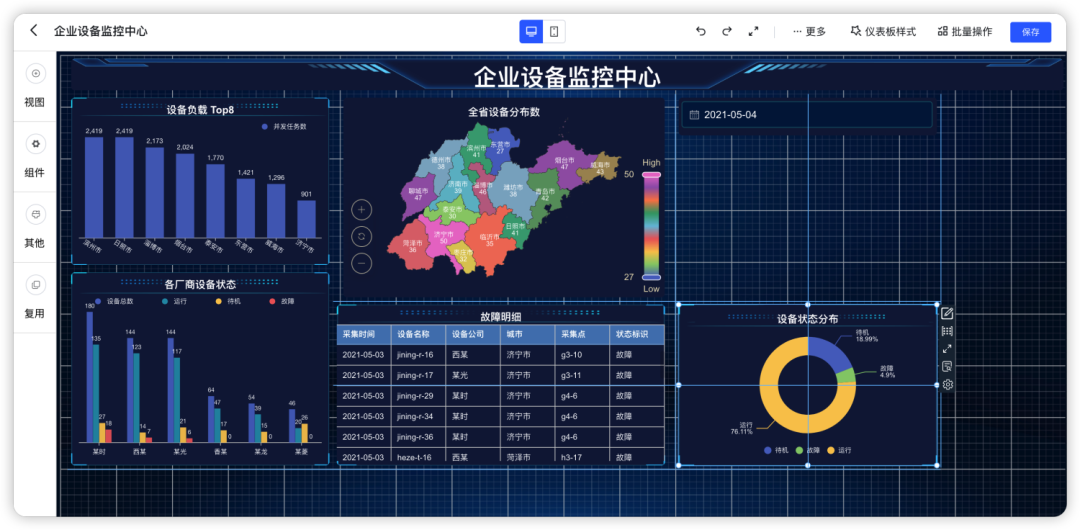
6. Dashboard sharing: DataEase supports more ways to share dashboards. You can create public links for dashboards, which is convenient for external users to access and view. It also supports sharing methods including email, exporting PDFs, exporting images, and exporting tables.
Rich themes, built-in template market
In the process of exploration, I accidentally discovered that DataEase even has its own "template market".
The types of templates here cover multiple usage scenarios and industry fields. Users can create beautiful large screens without having to worry about designing them themselves, which is very suitable for beginners without relevant experience.

Template market: https://dataease.io/templates/
The "Template Market" function section is also embedded in the DataEase operation interface. Select a template and apply it directly, easily switch to your own data set, and quickly generate the large screen you want.
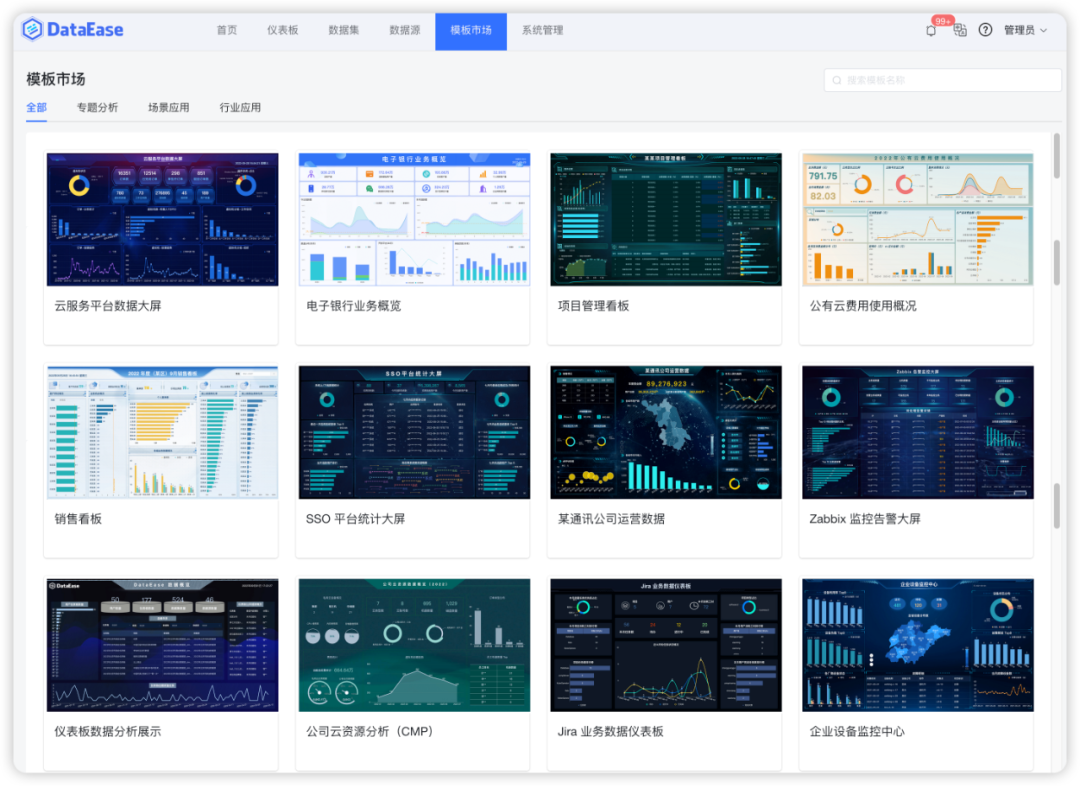
Ready to use out of the box, deploy in minutes
After fully experiencing the DataEase installation process, I have to say that the installation and deployment of DataEase is very friendly to novices, and users only need to execute one installation command to complete the installation.
The idea of DataEase to simplify installation and deployment is mainly reflected in the following aspects:
-
Use Docker to shield the environment differences of the system;
-
Provide scripts instead of manual operations;
-
Extract configuration parameters and provide default configuration;
-
Register system services and provide shortcut commands.
The following are the specific installation steps of DataEase:
According to different situations of whether the server can connect to the public network, DataEase provides two installation methods: online installation and offline installation. For specific steps, please refer to the official document:
-
https://dataease.io/docs/installation/online_installation/
-
https://dataease.io/docs/installation/offline_installation/
Next, we will explain each step by step.
1. Online installation
Execute the following command to install:
curl -sSL https://github.com/dataease/dataease/releases/latest/download/quick_start.sh | sh
2. Offline installation
Download the installation package and unzip it.
Installation package download address: https://community.fit2cloud.com/#/products/dataease/downloads
Execute the installation script in the unzipped directory
/bin/bash install.sh
3. Data backup
All user data generated after DataEase installation is placed in the installation directory, and users only need to keep or back up the files in the installation directory. In this way, even if the container and image are deleted, the user can still use the previous data after reinstallation.
Through the above steps, we can see that the user only needs to execute the installation script in the whole process, the process steps are few, the operation is simple, and no additional operation is required. From the perspective of installation and deployment, it is very friendly to users who have no relevant knowledge base.
Summarize
In addition to the design of these places mentioned above, DataEase’s teaching documents, teaching videos and other knowledge systems have also been relatively complete. The problems I encountered during use can basically be solved, and I can create my own in about an hour. dashboard.
After a comprehensive experience, it can be said that DataEase is already a very easy-to-use and powerful open source BI product. Its slogan "Everyone can use it" is reflected in all aspects.
BI products with low threshold and high usability are the general direction of BI product development in the future, and data visualization will no longer be an area that is difficult for ordinary people to reach in the future. It is hoped that the emergence of products like DataEase can help more users and enterprises discover and demonstrate the value of data.